Best Camping Food Ideas: Satisfy Your Stomach in The Wilderness
Eating outside in the bosom of nature, while breathing fresh air, immersed in the fragrance of weeds, wood, wild flowers, listening to a symphony orchestrated especially for you by birds and crickets accompanied by cicadas and leafhoppers, under the stars or the healing sun rays – this is one of the most exclusive extravaganzas that modern life has to offer.
Of course, for cavemen, this was merely an ordinary meal if not the daily pressing routine. But in our busy to-go-lunch lives this is quite a privilege. Such a perfect setting enhances all your senses, relaxes your body and your mind and thus prepares the premises for the most enjoyable feast.
[the_ad_group id=”21″]
Although nature is so overwhelmingly generous in its gifts, it does not prepare your food. This is the one thing you have to take care of yourself so you’d better check out the best camping food ideas.
Any food tastes better when cooked on an open fire. Fortunately, we still have enough woods on this Earth and many of them are wild enough to harbor a huge provision of withered branches carpeting the forest along with the leaves.
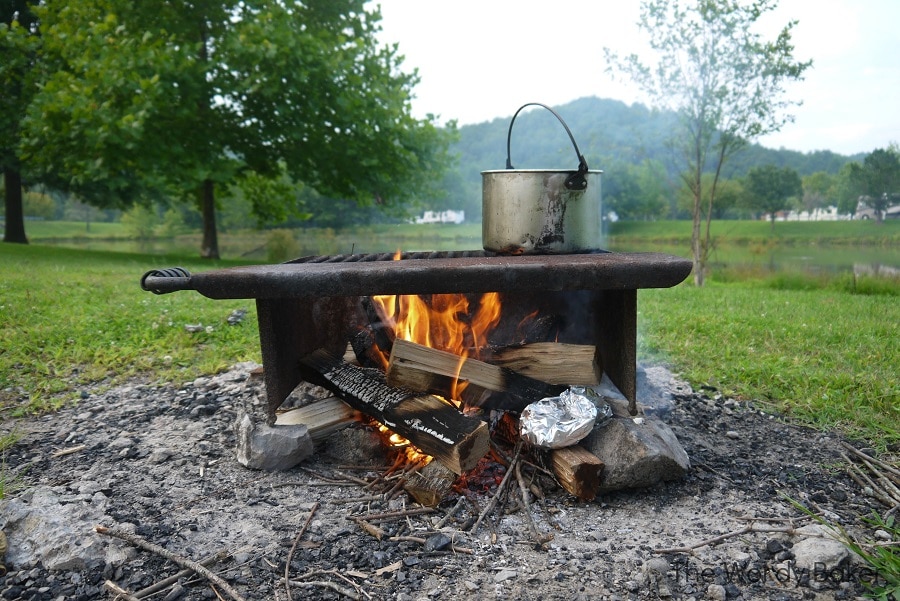
The burnt wood adds a unique flavor to your dinner, that you’re going to crave for when cooking the same thing at home and wondering what you did differently back camping. People in the food industry have dedicated entire departments for its study trying to artificially reproduce it in snacks and fast food – more like a joke for the fortunate ones that have tasted the real thing.
It’s this special aroma that will stick to your fingers, in your clothes and it will surround all your memories connected to camping. You know that sensation when you come back from the seaside and there’s salt in your hair and all over your skin even after a shower? After camping, you’ll always find a few weed blades stuck on freshly washed clothes and the scent of smoke still lingering after thoroughly shampooing every single hair.
And there is one more interesting phenomenon occurring when cooking on an open fire, one that makes people say that the food itself is infused with more energy – this is because the fire is naturally irregular compared to the steady gas stove flame, it is actually alive so it is only reasonable that so should be the meal it cooked.
Moreover, when fixing a meal at home you probably set the clock and carry on with the housekeeping, the home-job or whatever you put on hold to prepare lunch, but when you’re in the wilderness you can’t just put the pot on the fire and leave for a walk. You have the extra job of keeping the fire in, which also keeps you in constant contact with your food.
Some say that the practice of preparing your own food miraculously makes it more nutritious, but this also has a more down-to-earth explanation – while your mind concentrates on chopping the vegetables and adding the proper spices, relevant receptors throughout your body are also being prepared to best receive the necessary nourishment.
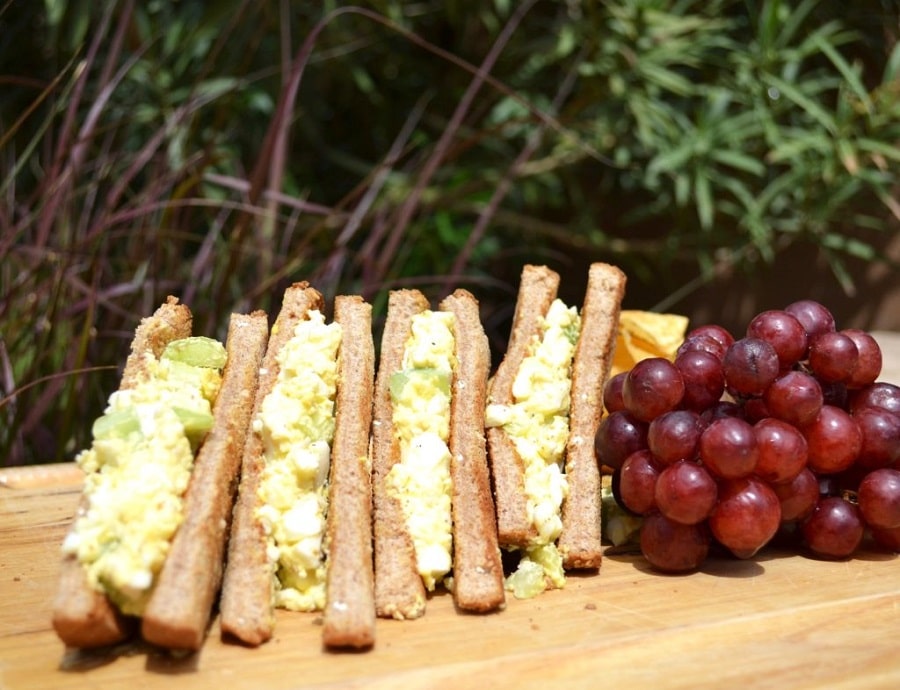
That is why chefs are claiming to have satisfied their appetite only by cooking the goodies. Of course, the recurrent check-taste can count on the end as a whole plate, but the point is to acknowledge the relation between you and your food. In the context of outdoor cooking, the fire is your element of connection.
The fire itself will transform the entire process into an enjoyable adventure, as this capricious force is not so easy to tame, it will blow its fumes straight in your face till you learn how to befriend it – but this captivating aspect is for you to explore on your own. Just try not to choke, not to get burned and not to stare too much in the fire either, or it may hypnotize you into forgetting that your main task was to cook.
Supplies
Lucky are the few that travel light. Most of us have a tremendously difficult problem with packing. Almost every time we go on a trip we take at least twice as much luggage than necessary, after spending hours in front of the backpack sorting, stuffing, pushing, taking all of it out and re-organizing the space hopefully more efficiently.
Just to admit in the end that, yes, you’ve only wore the clothes you put on the morning you left home and ate at most half the food you’ve taken with you because you were to tired to cook everything after carrying the one ton backpack whole day, like a huge cross on your back.
So packing light is almost the most important thing you have to think about when preparing your food supply. And you should be careful because what seems small is not necessarily easy.
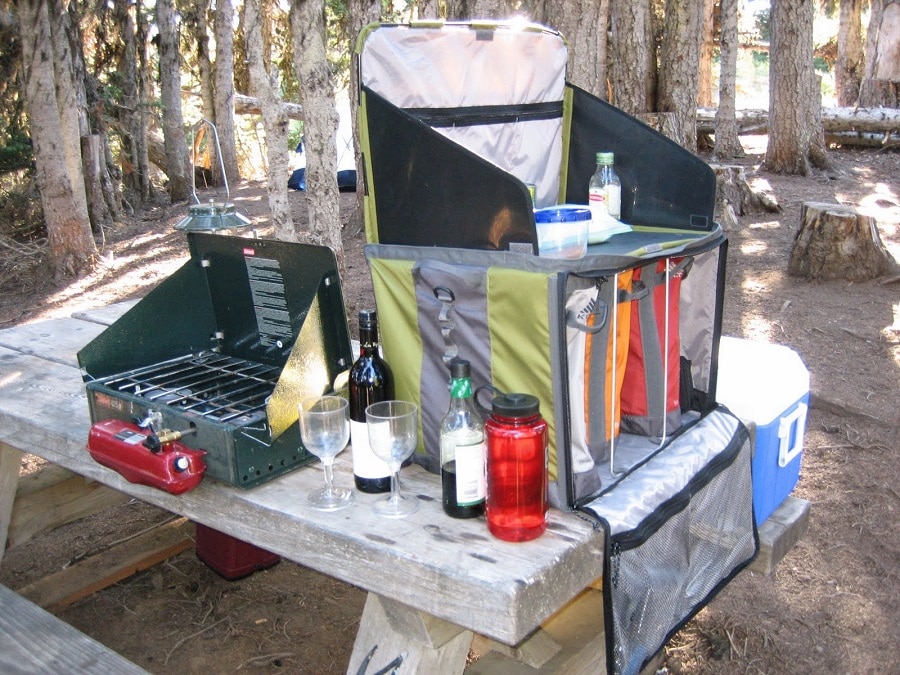
That is why most campers take canned food, that fits your luggage ergonomically, needs minimum or no preparation, all in all, serves survival needs. And of course some situations or places offer no time or condition for cooking, but otherwise, you’re just missing out on one of the greatest pleasures of camping.
You don’t need to bring your entire kitchen into the forest, but for sure there are a few items that you can’t improvise unless you want to really return to the old ways and manufacture your own pots from clay.
[the_ad_group id=”22″]
So here they are:
- An installation that can keep the pot on fire: either it’s a grill that’s equipped with legs, either it’s a tripod. You don’t have to necessarily buy the specially made camping gear, a tripod can be build from three long wood branches tied together and stuck in the ground; or an even easier method is to find two shorter branches that ramify in two at one end, place them diametrically and connect them with another one fixed on their forks.
(Only thing to be careful when building your own pot support out of wood, is to keep the fire low enough, otherwise, it will spread out and burn up your whole construction); - A large pot with a fire resistant exterior (no plastic handles): preferably one that can be hanged on a hook as well as set on the grill;
- Aluminum cans: sometimes it’s easier to cook one-person dishes. Besides that, it saves you from the burden of washing the dishes after eating, which in the absence of flowing water and with the need to maintain a basic water supply, can be quite a challenge.
One more advantage is that they’re as easy as feathers compared to pots and ceramic plates and they can be stacked together in a pocket of your backpack, before as well as after use; - Aluminum foil: this is the most radical option, if you just don’t want to carry anything with you, at least take the aluminum foil. You can actually use it to improvise small individual cans that can host your potatoes and other vegetables along with sauce, cheese or whatever you wish to add to the party;
- Tableware, dipper and other cooking instruments: unless you want to start eating with your hands, though a cooking spoon to fold the ingredients of your stew would be helpful so as not use a stick that can crumble into little pieces and boil along with the rest;
- A kettle for tea or coffee and cups;
- A small grill;
- Extra items if you want to get more sophisticated: a large pan, an egg pan.
Camping food recipes
You can go wild with your cooking in the wilderness and be extremely creative. One great aspect of this endeavor is that you can use the same ingredients to prepare various dishes.
You can put your sliced vegetables on a stick and fry them on the fire, boil them in a stew in the pot or wrap them in aluminum foil and bake them.
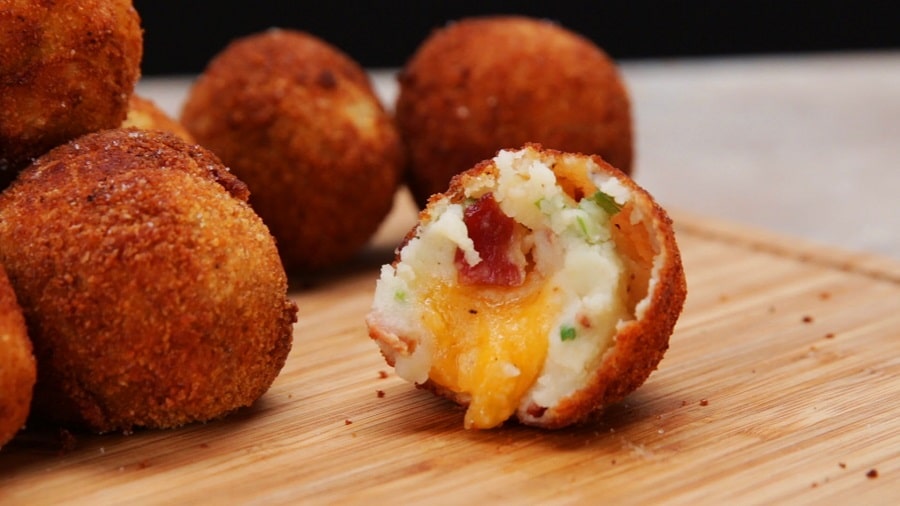
And most probably, even though you might be fantasizing about some specific dish, the cooking process will take you on its own flow and you’ll turn more flexible with the possibilities in front of you.
But nevertheless here are some tips:
- Baked potatoes stuffed with cheese and vegetables (bacon is also welcome): whole potatoes wrapped in aluminum foil and placed on the grill or on the red-hot coals. Alternately you can slice the potatoes, mix everything and wrap it up;
- Macaroni and cheese: it’s very easy to make in aluminum cans;
- Stew (instead of meat you can add mushrooms);
- Red lentils paste or cream soup: lentils are great because they’re very nutritious, they actually contain more proteins than meat, so just a small quantity can be the equivalent a large satisfying meal. To pre-cook lentils put them in a little water one night before;
- Baked bread sandwich: take a whole sliced bread and put cheese, onions and garlic, bacon or thin meat slices, wrap it in aluminum foil and put in on the fire;
- Paella : this is really easy to make while camping and it always turns out spectacularly delicious. Just mix the rice and veggies in a large pan or even in the pot;
- Grilled veggie or even mixed with beef to make it a proper kebab: the Brussels sprouts taste exquisite when simply grilled;
- Same method you can use to cook some desert: just put fruits on stakes instead of vegetables, powder some sugar and cinnamon over them and you’ll surely lick your fingers afterward. You can even try the old simple childhood sweet treat, baked apple – stab it with a stick, cover it in sugar so it can transform into the delicious caramel crust and hold it on fire, turning it around to bake evenly on all sides. And of course, if you’ve provisioned for this trip with some marshmallows, now’s the time to fry them;
- Baked banana stuffed with chocolate or jam: wrap it in aluminum foil and be careful because it fries really quickly.
Food that You Can Find in The Wilderness
Nature always provides everything you need. You can wander around the wilderness with your hands in your pockets and nothing on you except some salt and you can manage not only to survive but to be completely satisfied with the food offer.
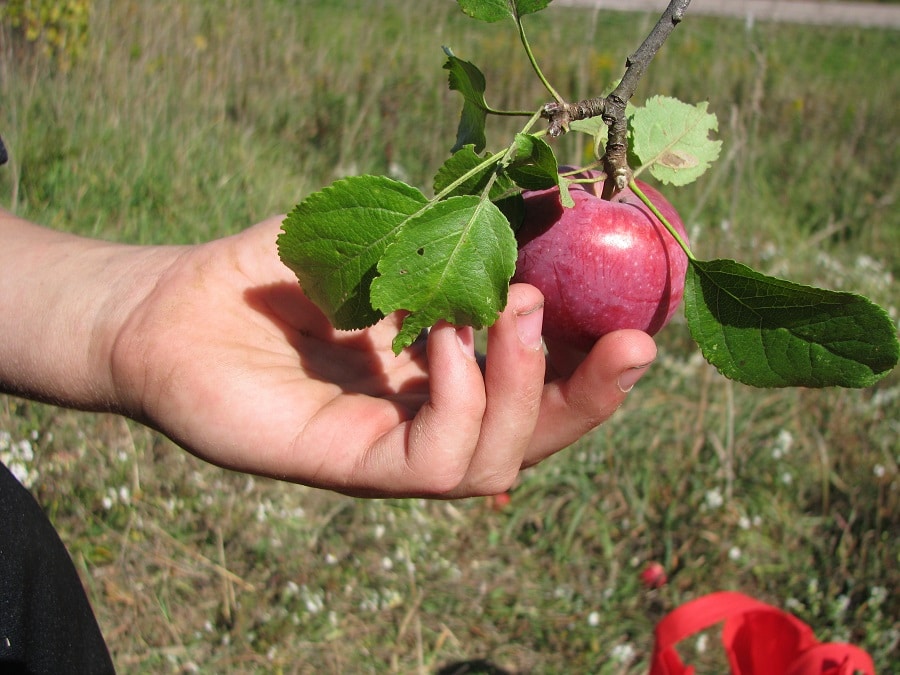
If you have some minimum skills and a nearby river you can catch fish and fry them – otherwise if you come prepared with just the tin foil, a tomato and some garlic your survival dinner can become a genuine banquet. Needless to say that if you’re a professional chef you can gratify yourself by preparing some frog legs and even an escargot, as no land is in a shortage of snails.
Nature will not let you starve, if anything you can eat ants for proteins. But let’s concentrate on the delicious treats that grow all around you:
- Even if you think you have everything you need neatly packed on your back, don’t hesitate to taste some wild apples or other fruits: they taste a bit sour but they a have a more powerful distinct flavor and when baked they turn sweater;
- There is a great variety of edible mushrooms all over this planet, with such impressive textures, tastes, and fragrances. The flesh of the earth, true delicacies that are extremely nutritious.
It is not at all advisable to collect and eat mushrooms if you’re not familiar with them because there is such a great variety that it takes an experienced gatherer to distinguish a poisonous one from a good one. But it is more than advisable to start learning about mushrooms.
Some of them can be added fresh to salads, others must be fried or boiled. In a stew or simply grilled, it’s one unforgettable experience to assemble your meal, picking it while you go along; - Wild onions or garlic grow on widespread areas: they look just like the cultivated species but a little bit smaller and they secrete that specific indisputable aroma.
In the spring you can also find their siblings, the ramps, and buckrams which are highly nutritious and delicious; - Sorrel: can be used in stews, soups, salads and even for sweets, as this plant is gaining more and more fame thanks to its sugar concentration;
- The stingy annoying nettles can be cooked into one great dish: they have enough iron to turn you into Popeye after just one sip.
It’s a troublesome task to pick enough for one meal as they will shrink four-five times when truly moistened and you will probably get blisters all over your hands, but it will be worth it.
Anyway, if you pay attention and take just the upper part, handling them by grabbing the underside of their leaves, where they have fewer stinging hairs, you can ease and quicken the whole process. As a plus, the nettle stings are therapeutic, aiding in rheumatic conditions. - Hazelnuts and (more rarely) chestnuts: can be found in the autumn, if you get to the trees before squirrels. When prepared on the fire their shell cracks easily.
- At almost every step you take you can find herbs to use for tea or for spicing up your food: the most elementary and widely spread are wild thyme and a great variety of mint.
But you can make a habit and pay attention to the smells you encounter in your walks. Most pleasantly aromatic plants are safe to eat and you are surrounded by so many of them. With the aid of wild herbs, your camping cooking steps up to a whole new level of refinement.
Gathering your food from your surroundings helps you connect with the natural environment and makes the whole experience complete.
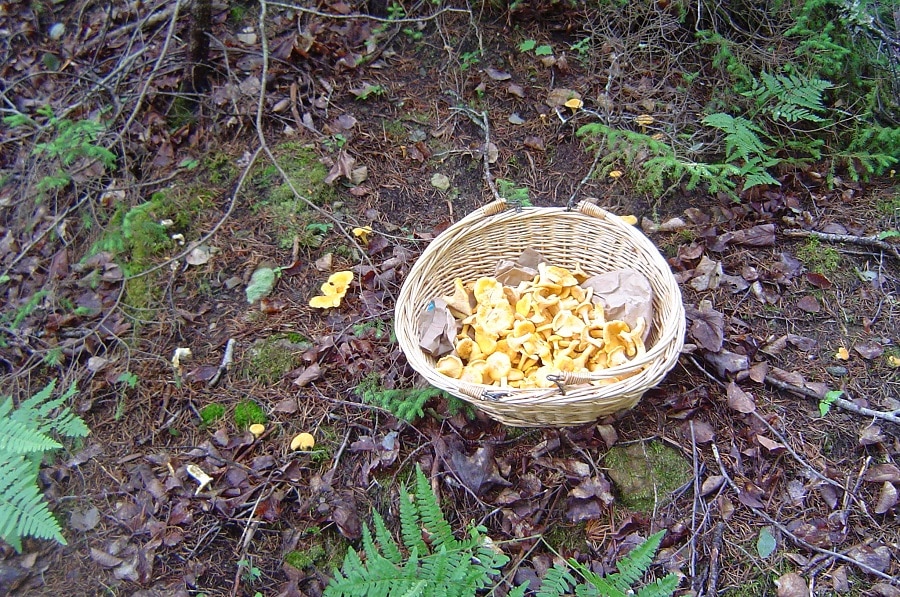
Taking a snack once in a while, a nut here, an apple there, reinforces your body and brings you to a more natural eating habit that is adequate to an extended effort the way hiking is.
The wild siblings of our cultivated vegetables are considerably smaller but more concentrated in vitamins, minerals, proteins. They are more appropriate as a diet for fully active organisms because they grant the necessary amount of substances in small quantities, you can be well fed and still light feeling.
[the_ad_group id=”23″]
And all wild plants have medicinal properties. But the same as in the case of mushrooms, you can’t go around making tea out of any weed, as it may be a toxic specimen, so better stick with what you know.
Moreover, these wild ingredients are becoming more and more scarce, suppressed by aggressive intensive farming so you may be meeting a one in a lifetime opportunity, you may be the lucky one who has the privilege of tasting the last wild onion in your area. That kind of onion that you will never find on a supermarket shelf.
What You Have to Keep in Mind
When peacefully preparing your dinner is that your fabulously flavored cooking pot may be calling unexpected guests at your table, from all over the forest.
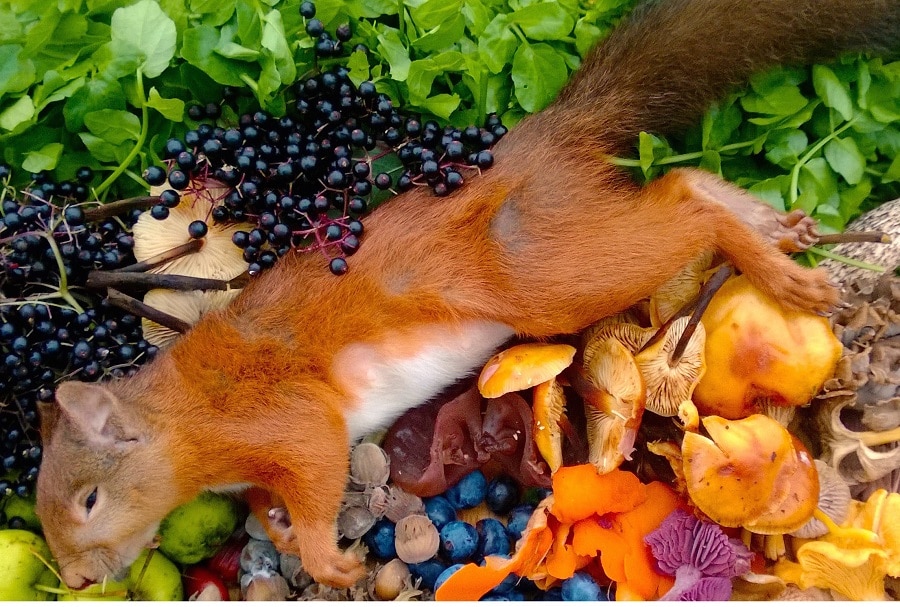
Better check out who your company is before unwrapping the piece of meat you particularly chose for this occasion. Or better yet (though easier said than done) stick with a vegetarian diet that’s less likely to attract bloody predators.

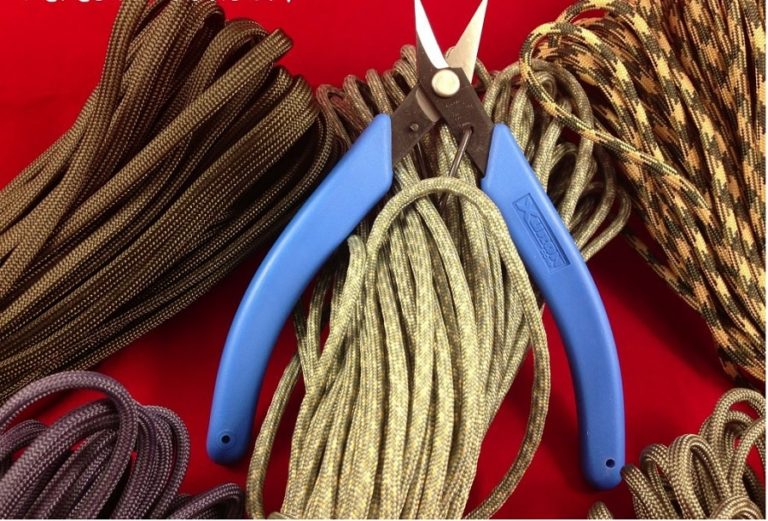
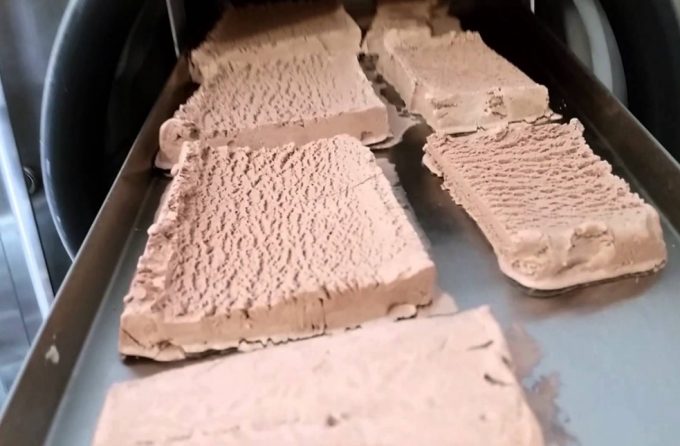
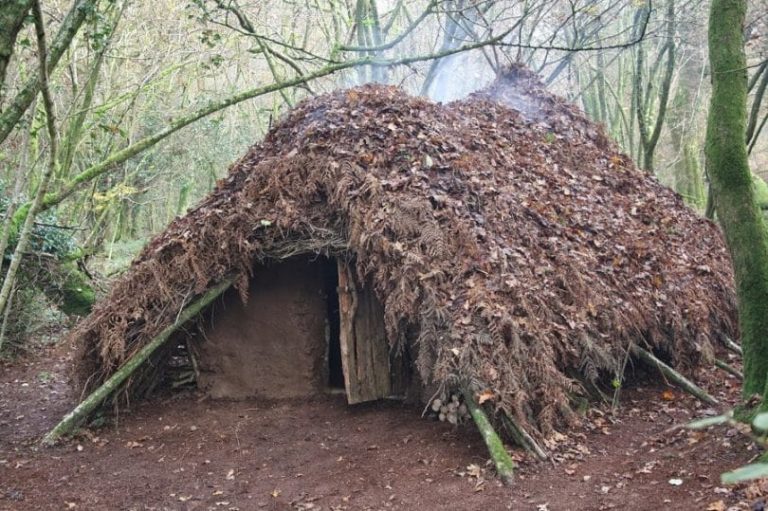
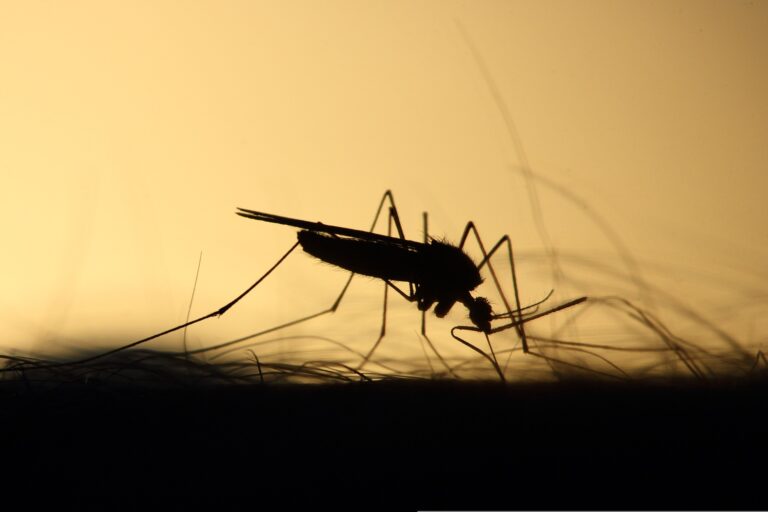


One of my absolute favourite dishes by a campfire is a veggie pouch. Prepare some potatoes, carrots, onions, peppers, asparagus, garlic or anything else that takes your fancy, coat them in olive oil or butter and season with salt and pepper, then wrap tightly in heavy-duty foil. Place them on a grate over the fire or directly into coals (my preferred option), turn them every five minutes or so for about 30 minutes and they’re done! There is very little preparation involved, no specialist tools or utensils needed, they’re easy to cook and there is almost nothing to clean up. What’s more, they’re delicious!
Veggie pouches are great! They are nutrient-rich and most of the available preparations and recipes are actually very tasty. And because they are already prepared prior to the travel, you really need little to no utensils at all!
One of my absolute favourite dishes by a campfire is a veggie pouch. Prepare some potatoes, carrots, onions, peppers, asparagus, garlic or anything else that takes your fancy, coat them in olive oil or butter and season with salt and pepper, then wrap tightly in heavy-duty foil. Place them on a grate over the fire or directly into coals (my preferred option), turn them every five minutes or so for about 30 minutes and they’re done! There is very little preparation involved, no specialist tools or utensils needed, they’re easy to cook and there is almost nothing to clean up. What’s more, they’re delicious!
Veggie pouches are great! They are nutrient-rich and most of the available preparations and recipes are actually very tasty. And because they are already prepared prior to the travel, you really need little to no utensils at all!
When out on a two/four-day kayaking trip, we try to travel as light as possible, as the kayak itself and it’s accompanying gear take up so much room.
Therefore, we try to make meals that require the bare minimum (if not any) utensils or cookware. Typically, it’s burritos for breakfast, lunch, and dinner. For breakfast, eggs sausage or bacon with potatoes and cheese and for lunch and dinner it’s usually rice and beans with chicken or beef.
We prepare them at home, wrap them in aluminum foil and freeze, then when we’ve set up camp, simply throw them into hot coals to heat up.
I am a believer that traveling light, especially if the trip is less than five days because it gives you so much freedom and mobility when you carry less stuff. As long as you bring foodstuff that will get you through the three major meals per day, everything will be fine. If I may add, don’t forget to bring filtration supplies or bottled water to keep you hydrated.
When out on a two/four-day kayaking trip, we try to travel as light as possible, as the kayak itself and it’s accompanying gear take up so much room.
Therefore, we try to make meals that require the bare minimum (if not any) utensils or cookware. Typically, it’s burritos for breakfast, lunch, and dinner. For breakfast, eggs sausage or bacon with potatoes and cheese and for lunch and dinner it’s usually rice and beans with chicken or beef.
We prepare them at home, wrap them in aluminum foil and freeze, then when we’ve set up camp, simply throw them into hot coals to heat up.
I am a believer that traveling light, especially if the trip is less than five days because it gives you so much freedom and mobility when you carry less stuff. As long as you bring foodstuff that will get you through the three major meals per day, everything will be fine. If I may add, don’t forget to bring filtration supplies or bottled water to keep you hydrated.